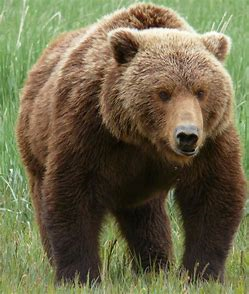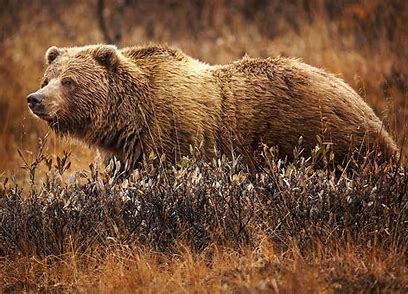
The official statistics have shown that brown bears live between 20 and 30 years. Although their life expectancy is long, a huge number of brown bears die before they reach 10 years.
About 400 to 1200 pounds for males. Females weigh about 300 to 800 pounds. Weight depends on where they live and diet. Bears who eat lots of salmon put on weight quickly.
Brown bears are at the top of the food chain and have no predators. They will eat almost anything. They are omnivorous and will eat plants and other animals if available. Plants food are their main diet. What they eat depends on what kind of foods are available where they live and the particular season. They like grass, leaves, wild berries, nuts, seeds, fruits, bulbs and tubers. They will also snack on beetles, termite nests, worms, ants, and other insects. They will use the claws on their paws to scrape bark, turn over logs, and disturb dirt mounds to find bugs and other edibles.
Brown bears live in North America, Asia, and Europe. Brown bears are one of the more familiar bears since they are widely distributed compared to other species. Their preferred living areas vary from meadows and valleys to forests and mountains.
These paticular Bears are brown, with little stubby tails, small ears, are very thick soft brown fur.

- Brown bears can climb trees to eat or escape predators, but only when they are cubs! As they become adults they become too heavy for climbing.
- Bears are extraordinarily intelligent animals. They have far superior navigation skills to humans; excellent memories; large brain to body ratio; and use tools in various contexts from play to hunting.
- Bears can smell over 2,000 times better than humans
- The sloth bear has the shaggiest fur.
- Unlike many mammals, bears can see in color.
- A swimming polar bear can jump 8 ft. (2.4 m) out of the water to surprise a seal.
- Koala bears are not bears at all and are not related to the bear family. They are marsupials
- Bears have non-retractable claws like dogs and unlike cats
